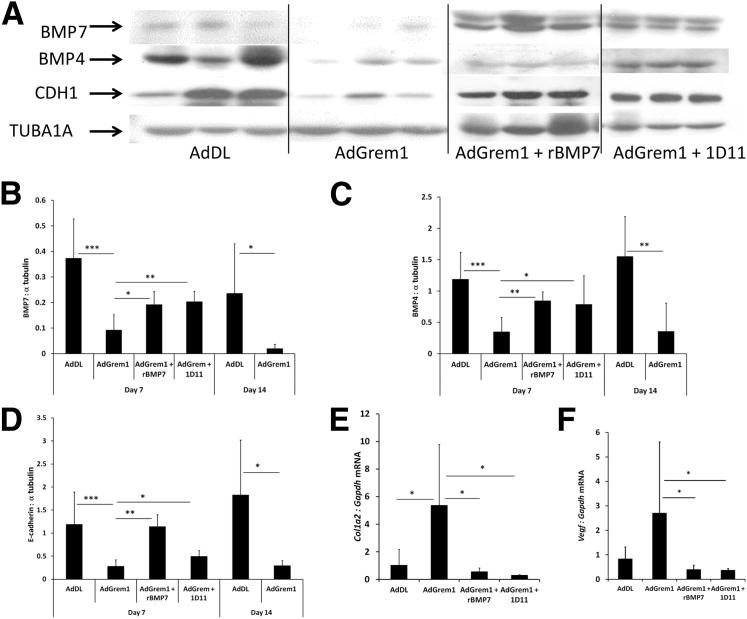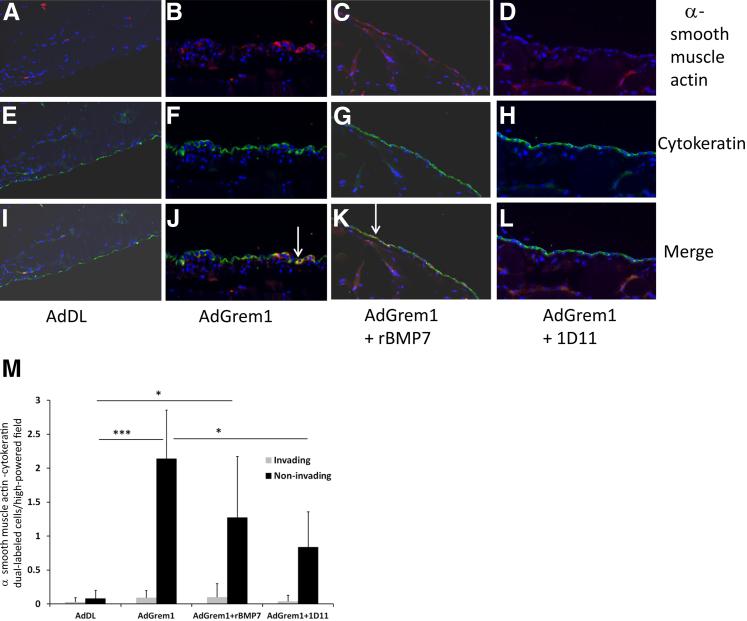Active Recombinant Human BMP7, Animal Free
| Cat.No. : | BMP7-135H |
| Product Overview : | Recombinant human BMP-7 is a protein composed of 16.5 kDa single chain, containing 144 amino residues. Human recombinant protein expressed in Nicotiana benthamiana. Recombinant human BMP-7 contains a 6-His-tag at the N-terminal end, is produced by transient expression in non-transgenic plants and is purified by sequential chromatography (FPLC). This product contains no animal–derived components or impurities. Animal free product. |
- Specification
- Gene Information
- Related Products
- Citation
- Download
| Species : | Human |
| Source : | Nicotiana Benthamiana |
| Tag : | Non |
| Protein Length : | 144 a.a. |
| Description : | The bone morphogenetic proteins are a family of secreted signalling molecules that can induce ectopic bone growth. BMPs were originally identified by an ability of demineralized bone extract to induce endochondral osteogenesis in vivo in an extraskeletal site. Bone morphogenetic protein 7 (BMP-7), also known as osteogenic protein 1 (OP1), is a widely expressed TGFb superfamily member with important functions during embryogenesis, in the adult, and in disease (Chen et al., 2004, Kishigami and Mishina 2005). BMP-7 plays a role in a variety of organ systems. It promotes new bone formation and nephron development (Sampath et al., 1992, Kazama et al., 2008), inhibits the branching of prostate epithelium (Grishina et al., 2005), and antagonizes epithelialmesenchymal transition (Zeisberg et al., 2003, Yu et al., 2009). In pathological conditions, BMP7 inhibits tumor growth and metastasis (Buijs et al., 2007), ameliorates fibrotic damage in nephritis (Zeisberg et al., 2003), and promotes neuroregeneration following brain ischemia (Chou et al., 2006). |
| Form : | Lyophilized from a Tris HCl 0.05M buffer at pH 7.4. |
| Bio-activity : | The biological activity of BMP-7 is measured by its ability to induce alkaline phosphatase production by ATDC5 cells. ED50 ≤ 40ng/ml |
| Molecular Mass : | Recombinant human BMP-7 is a protein composed of 16.5 kDa single chain, containing 144 amino residues. |
| AA Sequence : | HHHHHHSTGSKQRSQNRSKTPKNQEALRMANVAENSSSDQRQACKKHELYVSFRDLGWQDWIIAPEGYAAYYCEG ECAFPLNSYMNATNHAIVQTLVHFINPETVPKPCCAPTQLNAISVLYFDDSSNVILKKYRNMVVRACGCH |
| Endotoxin : | < 0.04="" eu="" ug="" protein="" (lal=""> |
| Purity : | >97% by SDS-PAGE gel |
| Applications : | Cell culture, Western blot |
| Storage : | This lyophilized preparation is stable at 2-8o C for short term, long storage it should be kept at -20oC. Reconstituted protein should be stored in working aliquots at –20°C and it is recommended to add a carrier protein (0.1% HSA or BSA). Repeated freezing and thawing is not recommended. |
| Reconstitution : | Lyophilized protein should be reconstituted in water to a concentration of 50 ng/ul. Upon reconstitution, It can be stored in working aliquots at –20°C for future use. Optimal reconstitution please follow batch Quality Control sheet instructions. |
| Gene Name | BMP7 bone morphogenetic protein 7 [ Homo sapiens ] |
| Official Symbol | BMP7 |
| Synonyms | BMP7; bone morphogenetic protein 7; OP 1; osteogenic protein 1; BMP-7; OP-1; |
| Gene ID | 655 |
| mRNA Refseq | NM_001719 |
| Protein Refseq | NP_001710 |
| MIM | 112267 |
| UniProt ID | P18075 |
| Chromosome Location | 20q13 |
| Pathway | ALK2 signaling events, organism-specific biosystem; BMP receptor signaling, organism-specific biosystem; Cytokine-cytokine receptor interaction, organism-specific biosystem; Cytokine-cytokine receptor interaction, conserved biosystem; Endochondral Ossification, organism-specific biosystem; Hedgehog signaling pathway, organism-specific biosystem; Hedgehog signaling pathway, conserved biosystem; |
| Function | cytokine activity; growth factor activity; protein binding; contributes_to protein binding; |
| ◆ Recombinant Proteins | ||
| BMP7-0781H | Recombinant Human BMP7 Protein (Asp30-His431), His tagged | +Inquiry |
| BMP7-105H | Active Recombinant Human BMP7 | +Inquiry |
| Bmp7-209R | Recombinant Rat Bmp7, His-tagged | +Inquiry |
| BMP7-11H | Recombinant Human BMP7 protein, His-tagged | +Inquiry |
| BMP7-17H | Recombinant Active Human BMP7 Protein, His-tagged(C-ter) | +Inquiry |
| ◆ Cell & Tissue Lysates | ||
| CPB-1276RH | Rabbit Anti-Human BMP 7 Polyclonal Antibody | +Inquiry |
| BMP7-8429HCL | Recombinant Human BMP7 293 Cell Lysate | +Inquiry |
Gremlin Promotes Peritoneal Membrane Injury in an Experimental Mouse Model and Is Associated with Increased Solute Transport in Peritoneal Dialysis Patients
Journal: The American Journal of Pathology PubMed ID: 25194662 Data: 2015/11/1
Authors: Imad Siddique, Simon P. Curran, Peter J. Margetts
Article Snippet:In mice exposed to AdGrem1, we treated one group with 1D11 (a pan-specific TGF-β inhibitor provided by Genzyme Corp., Framingham, MA) at a dose of 10 mg/kg.In mice exposed to AdGrem1, we treated one group with 1D11 (a pan-specific TGF-β inhibitor provided by Genzyme Corp., Framingham, MA) at a dose of 10 mg/kg.. 24 A second group of mice exposed to AdGrem1 also received recombinant BMP7 (rBMP7) (Creative BioMart, Shirley, NY) at a dose of 300 μg/kg.. 25 Both 1D11 and rBMP7 were delivered on days 1, 3, and 5 post-infection with AdGrem1.25 Both 1D11 and rBMP7 were delivered on days 1, 3, and 5 post-infection with AdGrem1.

Histologic analysis of the anterior abdominal wall after exposure to AdDL or AdGrem1 in B6 mice. A: Normal peritoneal structure seen 7 days after AdDL. B–D: Increased submesothelial thickening and fibrosis 7, 14, and 21 days after exposure to AdGrem1. E: In animals treated with AdGrem1 and

Adenovirus-mediated GREM1 overexpression is associated with decreased expression of BMP 7, BMP4, and E-cadherin (CDH1) in B6 mice. These effects are reversed by treatment with

Evidence of EMT in peritoneal tissue. Sections stained for α smooth muscle actin (red, A–D), cytokeratin (green, E–H) and merged (I–L). A, E, and I: There is no evidence of EMT after infection with AdDL. B, F, and J: B6 mice demonstrate evidence of EMT with cells labeled with both α smooth muscle actin and cytokeratin (arrow). C, G, and K: Similar co-expression is seen in animals treated with AdGrem1 and
Not For Human Consumption!
Inquiry
- Reviews (0)
- Q&As (0)
Ask a Question for All BMP7 Products
Required fields are marked with *
My Review for All BMP7 Products
Required fields are marked with *



